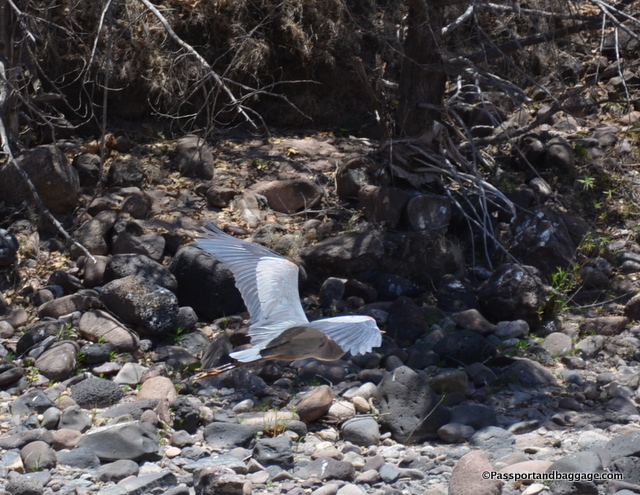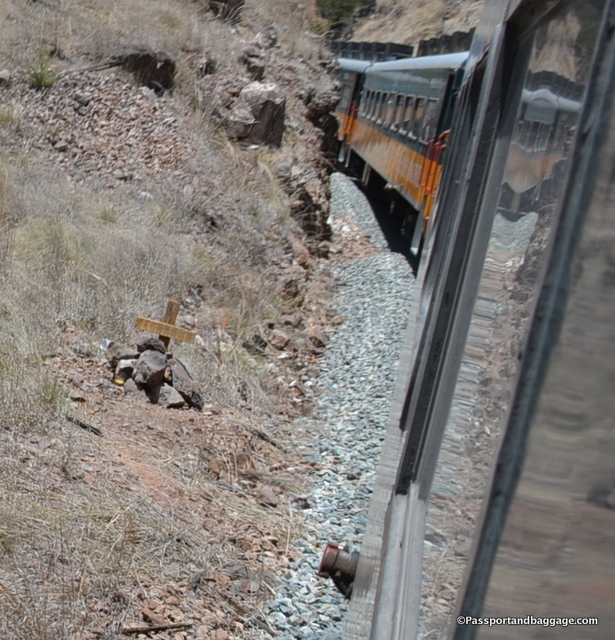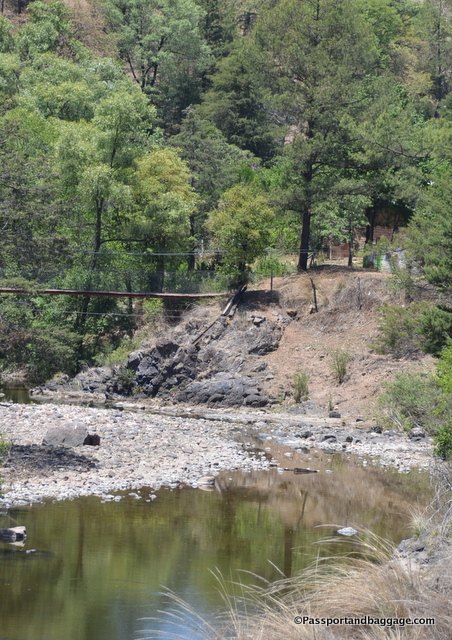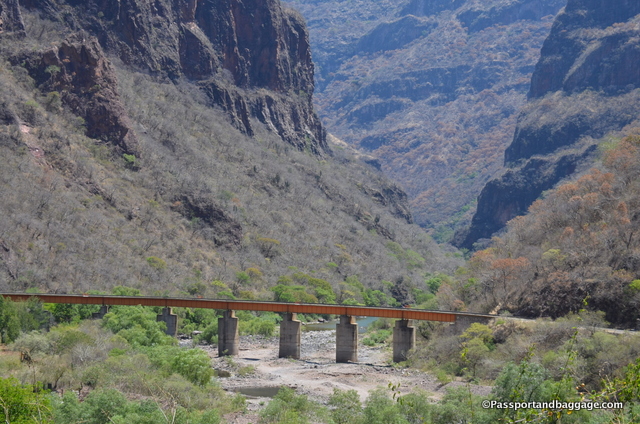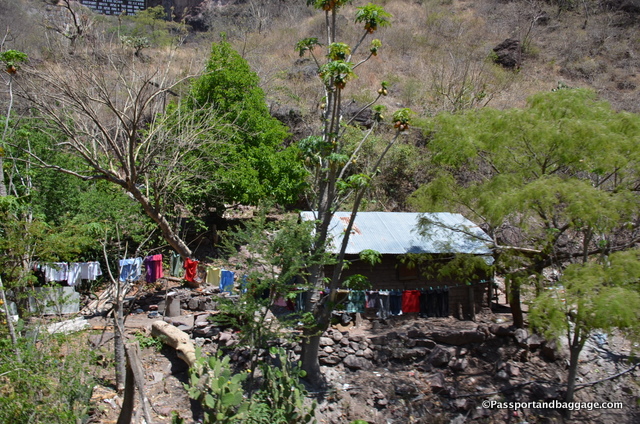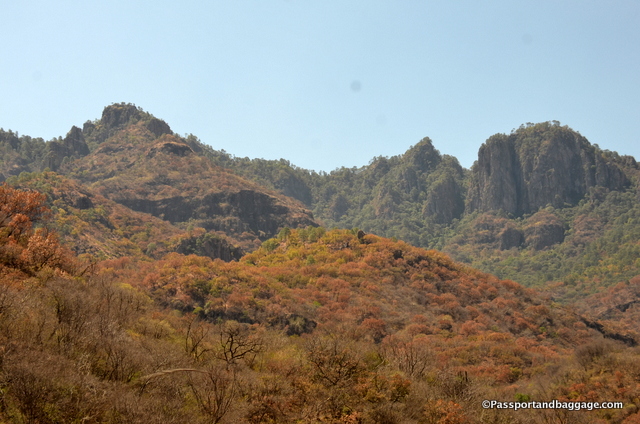El Fuerte to Cerocahui
May 3, 2017
It would be normal to begin your Copper Canyon train ride in Los Mochis where it begins but the area between there and El Fuerte is apparently not terribly interesting so it is easier to take a car to El Fuerte and begin there.
You are told to be at the train station at 8:00 in the morning, but the train can arrive anytime between 8 and 9. Our train was only about 20 minutes late, which is good for the Chihuahua-Pacific Railroad.
We were to disembark in Cerocahui for the night, the ride from El Fuerte to Cerocahui is about four hours long and travels through the Sierra Tarahumara, also called the Copper Canyon.
While there is open-pit mining for copper, gold, and other metals in the canyon, it actually got its name from the copper/green color of the canyon walls.
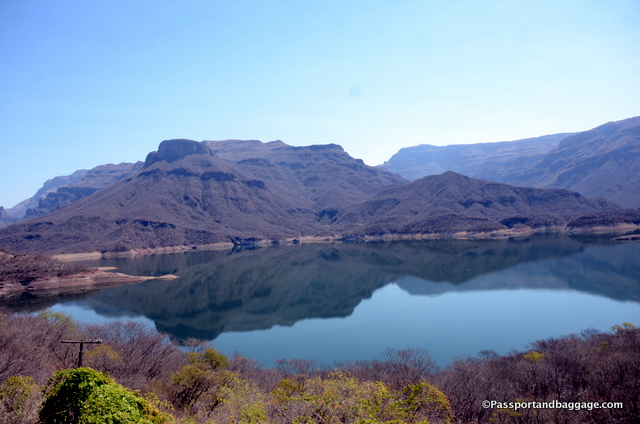
Colossio reservoir, created by the Luis Donaldo Colossio Dam separates the states of Sinaloa and Chihuahua
This area is named after the Tarahumara Indians which inhabit this remote area. The Sierra Tarahumara is part of an uplifted volcanic plateau and therefore does not have a watershed divide. This becomes obvious as you travel through this somewhat dry land
The extruded volcanic rock is typically between 1000 and 1500 feet thick and much of it is ash flow tuffa. This was laid down over an early Cretaceous layer and even older sedimentary rock. The result of the slow erosion by small trickling rivers is that the Sierra Tarahumara is considered one of the world’s largest proliferation of great canyons in a relatively small area.
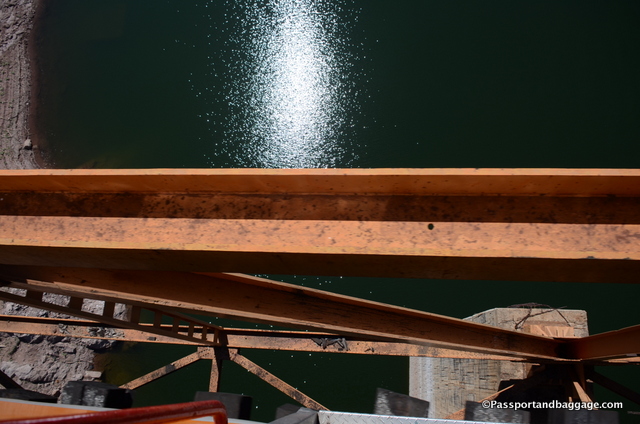
Looking down to the Colossio reservoir, 350 feet above the water and the tallest bridge on the rail line
Recent studies indicate that this area probably possesses more varieties of oak and pine than any other place in the world. There are also an amazing amount of animals, including the Chihuahuan grizzly bear and untold numbers of birds.
There are 37 principal bridges and 87 tunnels in the 306 miles of train line from Chihuahua City to Los Mochis. That is nearly 11 miles of tunnels and 2.25 miles of bridges.
The railroad took 90 years to build and connected this very isolated area to the outside world. The original concept was imagined by Americans to transport products from the east to the west coast and to the interior of the U.S. Inefficient management, financial problems, construction problems, the Mexican Revolution all delayed the construction. The Panama Canal made the railroad superfluous.

On this leg one goes from thorn forest to oaks and pine, surrounded by mangoes, Otate Cane Bamboo, Rock Figs and Sabal Palms
The concept of the railroad was officially recognized in 1880, when the president of Mexico, General Manuel González, granted a rail concession to Albert Kinsey Owen of the Utopia Socialist Colony of New Harmony, Indiana, who was seeking to develop a socialist colony.
Owen entered into an agreement to purchase 111,000 acres from a local hacienda owner and, with the help of then Mexican president Porfirio Diaz, obtained concessions for the railroad and the colony. He then chartered a corporation, Credit Foncier, in New Jersey.
 People buying stock in Credit Foncier received the right to join the colony, which was to be run communally and without the use of money. Work was to be assigned according to each person’s ability, with credits awarded for labor. Individual accumulation of wealth was prohibited. Eight hours of work, eight hours of sleep and eight hours of culture or entertainment were to make up the daily routine. Colonists would build, own, and operate the railroad, telegraphs, banks, and water supply. Capital gained would be reinvested in the colony’s infrastructure. The colony was begun in 1886 with 27 colonists and eventually grew to 2000. Like many Utopian societies, the organization became top heavy with too many chiefs and not enough Indians. There was a revolt and the project failed 14 years after it began.
People buying stock in Credit Foncier received the right to join the colony, which was to be run communally and without the use of money. Work was to be assigned according to each person’s ability, with credits awarded for labor. Individual accumulation of wealth was prohibited. Eight hours of work, eight hours of sleep and eight hours of culture or entertainment were to make up the daily routine. Colonists would build, own, and operate the railroad, telegraphs, banks, and water supply. Capital gained would be reinvested in the colony’s infrastructure. The colony was begun in 1886 with 27 colonists and eventually grew to 2000. Like many Utopian societies, the organization became top heavy with too many chiefs and not enough Indians. There was a revolt and the project failed 14 years after it began.
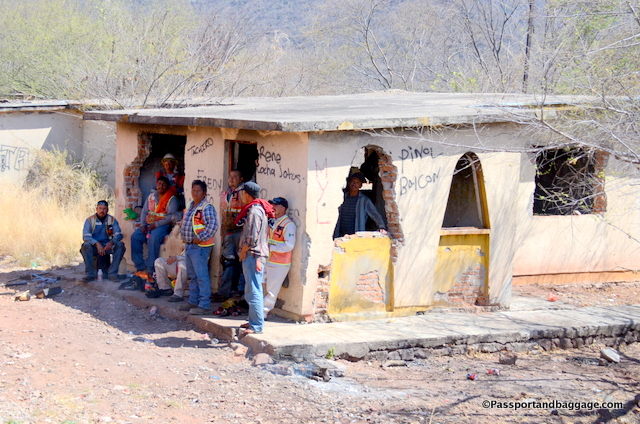
There is constant maintenance happening along the line, with workers waving and smiling to the passengers at many spots along the way.
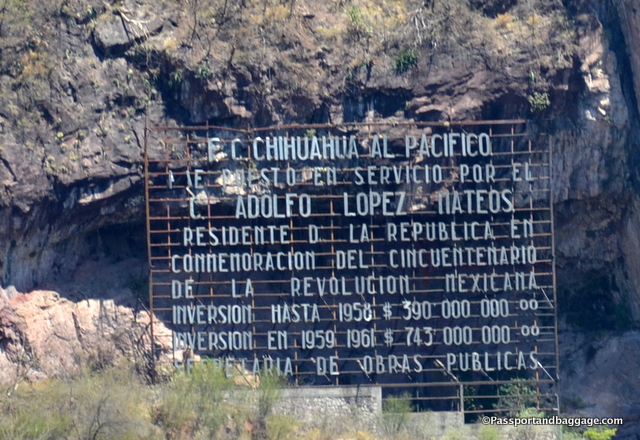
The Chihuahua Pacific Railroad under the service of C. Adolfo Lopez Mateos, president of the republic, in commemoration of the 50th anniversary of the Mexican Revolution has invested $390,000,000 in 1958 and $743,000,000 in 1959. The Secretary of Public Works
*
*
